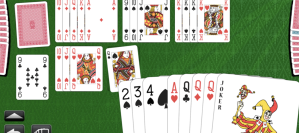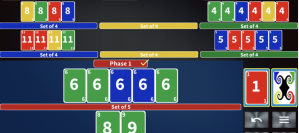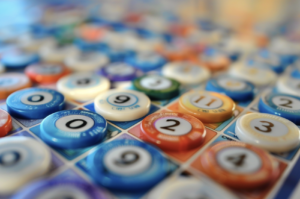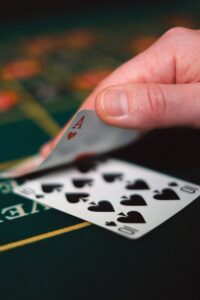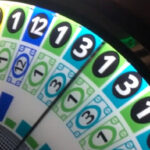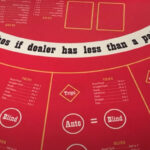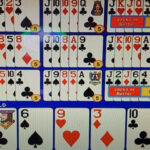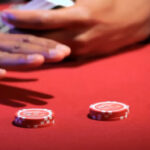Rummy is one of the world’s most popular card games that can be played competitively for money, as a friendly game with friends and family or even as a board game designed for members of the whole family. There are a number of varieties of rummy, including classic rummy, gin rummy (arguably the most popular of them all), rummy 500 and the German variant of the game, called treppenrommé. And then, of course, there’s the board game version, Rummikub. There are differences between all of them, especially in terms of scoring and when cards are revealed, but they all basically work the same and have similar objectives.
The Basics of Rummy
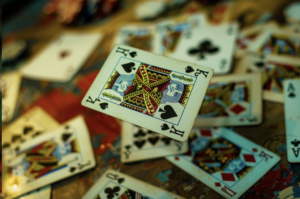
The objective of all forms of rummy is to make “melds” – specific sets of cards – from the cards you have in your hand and the cards you pick up from either the face-down stack or from the face-up discarded cards of other players. A meld, very simply, comes in two primary forms.
The first kind of meld involves a sequence of three or more cards of the same suit or, for Rummikub, colors. So, for example, 2, 3, 4, and 5 of Hearts would be a meld. As would 10, Jack, Queen of Spades. Some varieties of rummy allow you to “wrap” the Ace so you could make a meld of King, Queen, and Ace of Clubs, but you can’t add any numbers to the ace. So, yes to 10, Jack, Queen, King, Ace; no to Queen, King, Ace, 2, 3.
The second kind of meld is made up of three or four cards of the same card in different suits. So, three Jacks of Spades or four 5s. Each card has to be a different suit, though, so while you can have a 5 of Spades, a 5 of Clubs and a 5 of Diamonds to make a meld, you can’t make a meld of three 5s of Diamonds or two 5s of diamonds and one 5 of Spades.
The object of all versions of rummy is to clear your hand of all cards that aren’t part of a meld. Some versions of rummy require you to hold onto your hand and not play your melds by putting them face-up on the table until you or someone else only has melds on hand. Gin rummy is played like this. Other forms of rummy, including Rummikub, allow you to play your melds as you make them and you can manipulate other melds on the table to make new melds from cards in your hand.
The History of Rummy

There is some controversy as to the origins of rummy. Rummy, as we know it, was almost definitely invented in the late 19th century, but some scholars suggest that it was created in Mexico, others in China.
Those who argue that it was created in Mexico point towards an older Spanish game, known as Conquian, which had been around since the 17th Century and was imported by Spain to the Americas when they colonized the area in the 19th century.
Those who argue that its origins lie further east, believe that rummy was a derivative of the older Chinese game of Khanhoo from a couple of centuries before and that both games can actually be traced back thousands of years to the famous ancient Chinese game of Mahjong. Though China isn’t the only Asian country with claims to the game actually being derived from the Japanese game, Hanafuda.
The most convincing argument, though, is one that combines the two: that rummy proper was only invented in Mexico circa 1890, but that it was based on both the older Asian and Iberian (Spanish and Portuguese) games, with the increased trade between the West and the East over the past 500 years influencing card games as much as they influenced other aspects of culture. The so-called “Silk Road” that connected China with Europe and North-Eastern Africa was an incredibly lucrative trade route that was developed primarily for the trade of fine Chinese silks, but became a source of trading for all kinds of goods developed by the countries connected by these routes.
Regardless, rummy itself started to gain popularity soon after its introduction at the end of the 19th century, spreading wildly across the United States, in particular, in the early parts of the 20th century. From here, variants of the game were developed, including gin rummy and rummy’s “cousin” game of canasta.
From the US, it quickly spread throughout the world and interestingly, despite almost definitely not originating in India, it became one of that country’s most popular games. So much so, that rummy is one of the only games that can be played for money in India, with massive tournaments held across every part of the gigantic country. It’s also an activity that easily bypasses the caste system as it is freely enjoyed by the rich and poor alike.
It can be played for money outside of India too, of course, and it is throughout the world. Based on the nature of its gameplay, it’s not actually considered a gambling game in most places so like in India, it can be played for cash even in countries with strict anti-gambling laws.
But, quite unlike games like poker or blackjack, which really need to be played for money, rummy, like bridge, can be played just for fun, with no betting or cash prizes required at all. It’s for this reason that it has become one of the favorite family games out there. Though Rummikub is usually the family game of choice, the beauty of regular rummy is that all it takes to play it is a regular deck of cards and maybe something to record your score (such as your phone).
It’s easily one of the cheapest, easiest and most versatile games around, regardless of where and when it first began.


